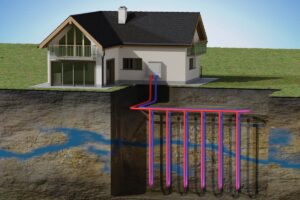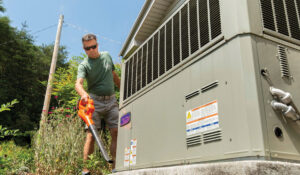Q: I don’t have a big budget for energy-efficiency upgrades. Can you share budget-friendly, energy-saving tips?
A: You don’t need a lot of money to save on energy bills. Decreasing monthly bills and being more efficient at home is something we all should practice. Here are some budget-friendly energy efficiency tips targeting one of the biggest energy users in the home – the heating system. Heating and cooling account for nearly half of a U.S. home’s energy consumption.
Add coziness to your home
One way you can feel warmer in your home without turning up the thermostat is by making your home cozy. The way our bodies perceive the temperature of a room is based more on the surfaces in the room than the air temperature.
In general, harder surfaces feel colder. For example, a tile floor will feel cooler than your fabric sofa. Adding an area rug to a hard-surface floor can make us feel warmer, even with the same setting on the thermostat.
The same goes for windows. Windows are typically the least-insulated surface in a room and can feel cold in winter months. Adding or closing curtains can help the room feel warmer.
Check the windows
Make sure windows are closed and locked. Locking windows pulls the sashes tighter together, reducing gaps that allow air to flow through and cause drafts. If your sash locks don’t form a tight fit, adjust them or add weather stripping.
There’s a variety of window weather stripping products available for less than $20. Most are simple to install and only require tools you most likely already have around the house, such as scissors and a tape measure.
Some are more permanent solutions, and others are intended to be used for one heating season and then removed. Temporary solutions such as caulk strips, putty, pull-and-peel caulking or window insulation films can be used if you rent and can’t make permanent changes.
Seal the doors
Weather stripping doors is an easy do-it-yourself project. Make sure doors seal tightly and don’t allow drafts to pass around the edges or under the door.
Be sure any doors leading to an unheated space (outside or into a garage) are sealed tightly. If you see light around the edges or underneath the door, or feel air movement when the door is closed, you are losing energy.
Doors need to open and close easily. Expect to do a bit of adjusting after installing weather stripping. If not installed correctly, it can make the door hard to close. Making it too loose defeats the purpose.
Close the damper
If you have a fireplace, make sure the damper is completely closed when not in use. Leaving the damper open is like leaving a window open. The air you just paid to heat your home will go right out the chimney.
The only exception, some gas fireplaces need to remain open for gas fumes to exit the home. If you have a gas fireplace, check the owner’s manual for more information on the damper position.
Layer up
It can be tempting to adjust the thermostat to increase your comfort. Putting on a comfy sweatshirt can have the same impact without increasing your energy use. Slippers can help, too.
The next time you consider turning up the thermostat a few degrees, try some of these tips first to stay warm and leave increased energy bills out in the cold.
Photo: Adding an area rug to a hard-surface floor can make your home feel warmer. Your pets will enjoy the coziness, too. Credit: Mark Gilliland, Pioneer Utility Resources










